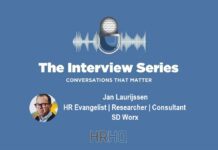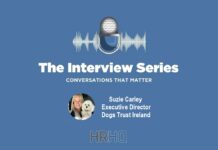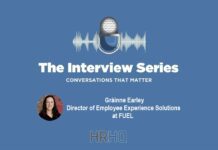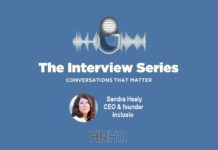by Adrian Foley, Managing Director Ireland, The Access Group
Ireland’s auto-enrolment pension scheme is just around the corner, and while it’s a welcome move for workers, it’s also one of the biggest operational shifts Irish employers have faced in years. With over 800,000 workers expected to be enrolled into the My Future Fund, the real challenge lies not in the principle, but in the practicalities.
But there’s a deeper issue at play: confusion. Despite the scheme’s significance, many Irish businesses are still unclear on what’s required of them. From conversations with employers and industry peers, it’s clear that awareness levels vary widely. Some are vaguely aware, others are still waiting for clearer guidance from the National Automatic Enrolment Retirement Savings Authority (NaERSA), and many feel the communications to date have been slow and inconsistent. This lack of clarity is creating uncertainty, and with the clock ticking, that’s a problem.
This change touches everything, from payroll and HR to finance, IT, and internal communications. Employers will need to track eligibility in real time, manage opt-outs after six months, re-enrol staff every two years, and report everything accurately to Revenue. These requirements are not optional, and they cannot be managed effectively through manual processes or fragmented systems.
What we’ve seen from working with Irish businesses is that those getting ahead aren’t just reacting to the legislation. They’re treating auto-enrolment as a chance to improve how they work. They’re bringing the right people together early, reviewing their systems, and starting conversations with employees now, not in December. They’re not just preparing; they’re positioning themselves as forward-thinking employers in a competitive labour market.
Technology helps. Integrated HR and payroll platforms make the process smoother, especially those built with Irish compliance in mind. But the real difference comes from leadership and support. Tech providers have a role to play, not just in delivering software, but in helping businesses navigate the broader change. That’s why we are hosting a conference for Irish businesses to bring together experts, peers, and practical guidance, because organisations shouldn’t have to figure this out alone.
If you’re still running payroll on spreadsheets or juggling between three different systems that barely talk to each other, auto-enrolment will be painful. But the real difference comes from leadership. The organisations making real progress are the ones with executive sponsorship, clear accountability, and a willingness to engage with the challenge early.
Communication is another area where timing matters. Your employees won’t thank you for surprise pension deductions, even if it’s for their own good. Auto-enrolment might be automatic, but understanding isn’t. Employees will have questions about their existing pensions, contribution rates, opt-out options, and they’ll need clear, jargon-free answers. A one-size-fits-all approach won’t cut it. Younger employees just starting out will need different information than those nearing retirement with occupational pensions already in place.
There’s also a reputational angle to consider. In a tight labour market, how you handle change matters. Employees notice when things are done well and so do candidates. Those who communicate clearly, plan proactively, and support their teams through transitions are building trust, and that trust translates into stronger retention and recruitment. Auto-enrolment may be a statutory requirement, but the way it’s implemented can say a lot about an organisation’s values.
Financial planning is another critical piece of the puzzle. Contribution rates will rise gradually from 1.5% in 2026 to 6% by 2034.[1] That gives finance teams a chance to model the impact and adjust benefits strategies accordingly. It’s not just about absorbing the cost; it’s about using this moment to rethink how you support your workforce, aligning it with employee expectations and business priorities.
There’s also a wider regulatory context that can’t be ignored. Auto-enrolment is arriving alongside other compliance requirements, including gender pay gap reporting and preparations for the EU AI Act. For large employers, this convergence means it’s time to think holistically. Those organisations doing well are the ones with integrated systems and coordinated governance structures and are treating these changes as part of a broader transformation – not isolated tasks to be ticked off.
This is the most significant shift in Irish workplace pensions in a generation, but it’s also a moment of opportunity. With the right preparation, organisations can not only meet the requirements, but they can improve how they operate, how they engage their people, and how they’re seen in the market.
The businesses making real progress share a few common traits. They’ve brought the right people together early. They’ve taken a hard look at their systems and processes. They’ve started communicating with employees in a way that builds understanding, not confusion. And they’re treating the rising contribution rates as a known cost to plan around, not a crisis to fear.
There’s still time to get this right. The companies that act now will have the breathing room to test systems, phase communications, and iron out the wrinkles before they become problems. They won’t just meet the requirements of auto-enrolment, but they’ll demonstrate what strong leadership looks like during a time of change.
[1] Auto-enrolment pension – My Future Fund
About the author
Adrian Foley is Managing Director for Ireland at The Access Group, provider of PeopleXD Evo HCM software. The company has operated from Cork for over 40 years, originally as CoreHR and acquired by The Access Group in 2020. To support Irish businesses through the upcoming pension auto-enrolment changes, The Access Group is hosting a conference in Dublin, bringing together over 300 employers, industry experts, and technology leaders. The event will focus on practical guidance, peer insights, and strategies









































